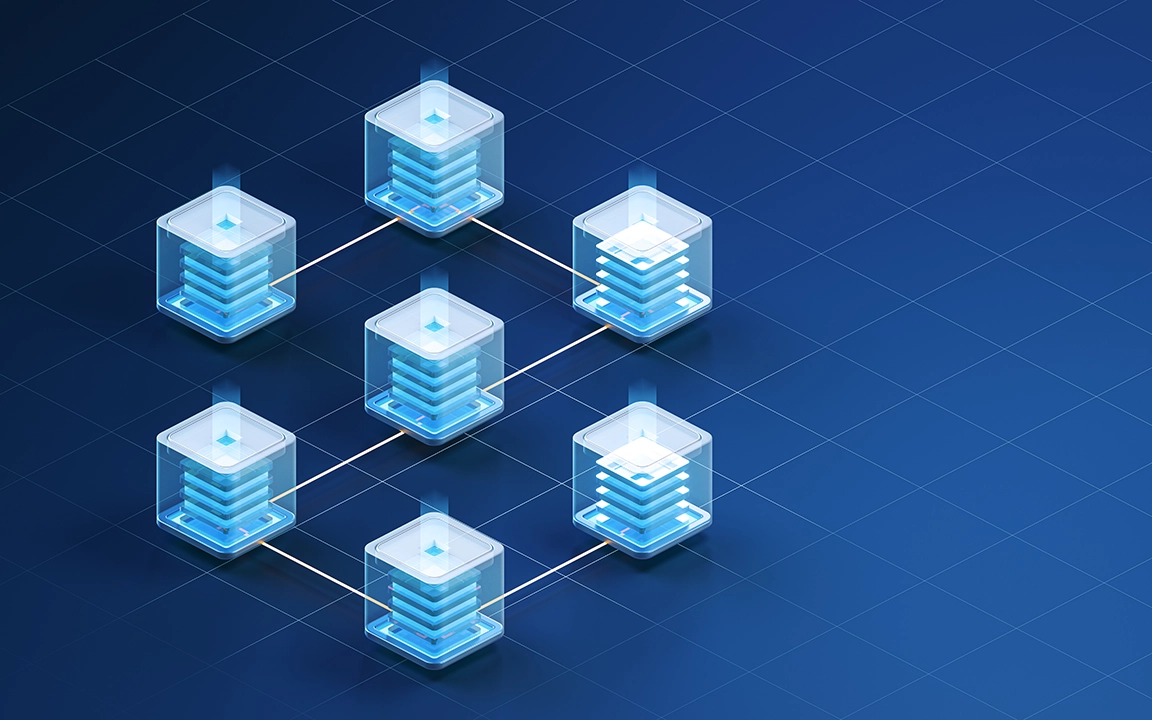What Is A Layer 1 Blockchain?

Table of Contents
The Layer 1 blockchain is the foundation of the blockchain ecosystem. It acts as the main structure within which all transactions are processed and recorded. It is so robust that it doesn’t need any other additional layers.
Layer 1 blockchains handle everything from security to transaction validation, all the while making sure that the network runs smoothly.
Ahead, we will explore everything you must know about Layer 1 blockchain. Let’s dive right in!
What Is Layer 1 Blockchain?
Blockchain layer 1 is the base that holds the infrastructure of blockchains together. Commonly known as mainnet, this is where all the transactions are processed and verified. Even the MFEV Blockchain is built on Layer 1 architecture. This is because it lays a strong foundation for scalability, security, and decentralization.
To put it simply, this robust layer is where all the action takes place. It handles tasks like transaction validation, data recording, and network security without relying on additional layers.
Thanks to the decentralization in Layer 1 blockchains, MFEV prevents tampering and provides a trusted, immutable record of activities.
Now, to put it simply, imagine a blockchain as a town. This town has different stores, shops, and services that people use every day.
Layer 1 is like the town’s main infrastructure. It includes the roads, electricity, and water supply. Without these, none of the stores or services could function, could they?
People move through the town using these roads just like transactions need L1 and the town’s security team, like the blockchain’s network, makes sure that everything is smooth and safe.
How Does Layer 1 Work?

A Layer 1 blockchain works by having its own group of networks known as the nodes. They are responsible for checking and confirming transactions. These nodes communicate with each other to make sure every transaction is valid before it gets added to the blockchain.
To agree on which transactions are valid, these nodes follow a set of rules called a consensus algorithm. Some of the common ones include:
Proof of Stake
Here, nodes commit a certain amount as a stake to participate in validating transactions. The more tokens a node stakes, the higher its chances of being selected to create the next block. This selected node, known as the validator, checks transactions, adds the block to the blockchain, and earns rewards.
Proof of Authority
Often used in private blockchains, this focuses on the reputation of validators. It delivers fast transactions by using a consensus mechanism based on the identity of validators, rather than tokens. Trusted, pre-approved validators secure the network and make it efficient and scalable.
These consensus methods ensure that all nodes agree and maintain a secure, decentralized system.
General Features of L1 Blockchain

Here are a few general features of the L1 blockchain you must know about.
Transaction Speed (TPS)
Transaction speed, which is measured in transactions per second (TPS), shows us how quickly a blockchain can process transactions. A higher TPS means faster processing times, which is essential for user experience, especially during peak times. It is important for smoother operations in applications like payments and trading.
Decentralization
Decentralization means that no single entity controls the blockchain. Instead, a network of independent users (nodes) validates transactions and maintains the system.
Smart Contracts
Smart contracts are self-executing agreements with the terms written directly into code. They automate processes and eliminate the need for intermediaries so transactions become better and faster.
Native Token
Each Layer 1 blockchain has its own cryptocurrency or token, which is used for transaction fees and rewarding participants. This native token facilitates transactions within the blockchain system and users can engage in various activities like trading, staking, etc.
Governance
Here, users can participate in processes regarding protocol changes and upgrades. Token holders can vote on important matters, such as feature implementations or updates.
Properties of MFEV Layer 1 Blockchain
Here are all the properties of the MFEV layer 1 blockchain you must know about.
Decentralization
MFEV operates on a decentralized network of nodes, which can enhance security and make sure that no single entity can control the network. This prevents single points of failure and ensures a resilient operation against attacks. This transparency builds trust, as all transactions are visible and immutable.
Security
Layer 1 makes use of the Proof-of-Distribution consensus mechanism to secure transactions where multiple validators verify each transaction. Thus, it protects against fraud and unauthorized access.
Scalability
Designed for high scalability, MFEV can efficiently handle a growing number of transactions and accommodate increased user activity without compromising performance.
Transaction Speed
MFEV features a high-speed blockchain that enables fast transaction processing and gives you a seamless experience.
Immutability
Once recorded on the MFEV blockchain, data becomes immutable, meaning it cannot be altered or deleted. This feature ensures the integrity and reliability of energy data verification and provides you with a trustworthy record of all transactions.
Interoperability
MFEV is compatible with Ethereum Virtual Machine (EVM), which enables easy integration with EVM-based platforms and applications. Hence, it allows for cross-chain interactions.
Smart Contract Functionality
The Layer 1 provides the deployment of smart contracts. It ensures automated and secure execution of agreements and the development of decentralized applications (dApps).
Proof-of-Distribution Model
This unique model distributes transaction fees among validators, delegators, and smart contract creators, which increases network security and makes way for innovation.
Peer-to-Peer (P2P) Transfers
Layer 1 offers secure, fast, and direct peer-to-peer transfers of digital assets. It lets you transact without intermediaries for quick and private transactions.
Conclusion
As you can see, the MFEV Layer 1 blockchain is a strong and innovative platform that makes transactions safer, faster, and more reliable.
Its decentralized setup builds trust among users and encourages teamwork among developers.
With its focus on efficiency and growth, the MFEV blockchain is ready to make a positive difference. If you want to know more, visit our official website at www.mfev.io



